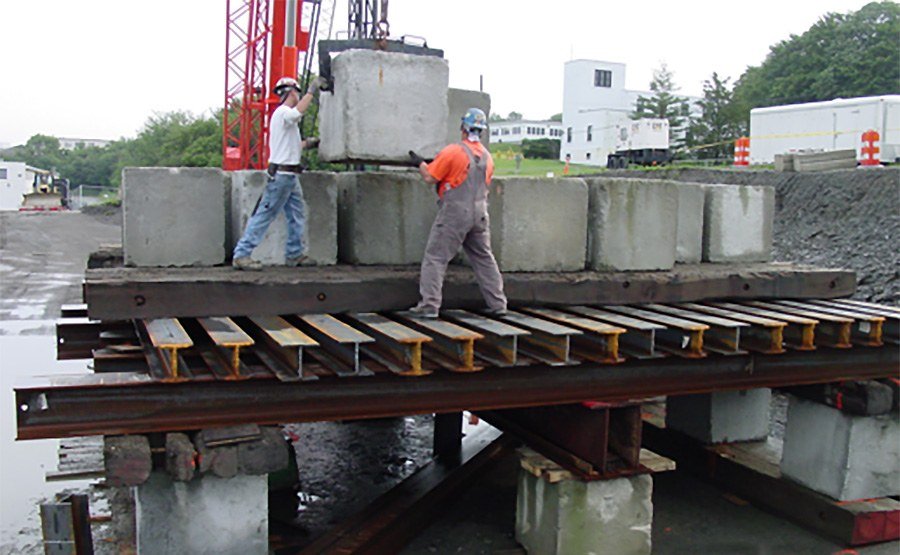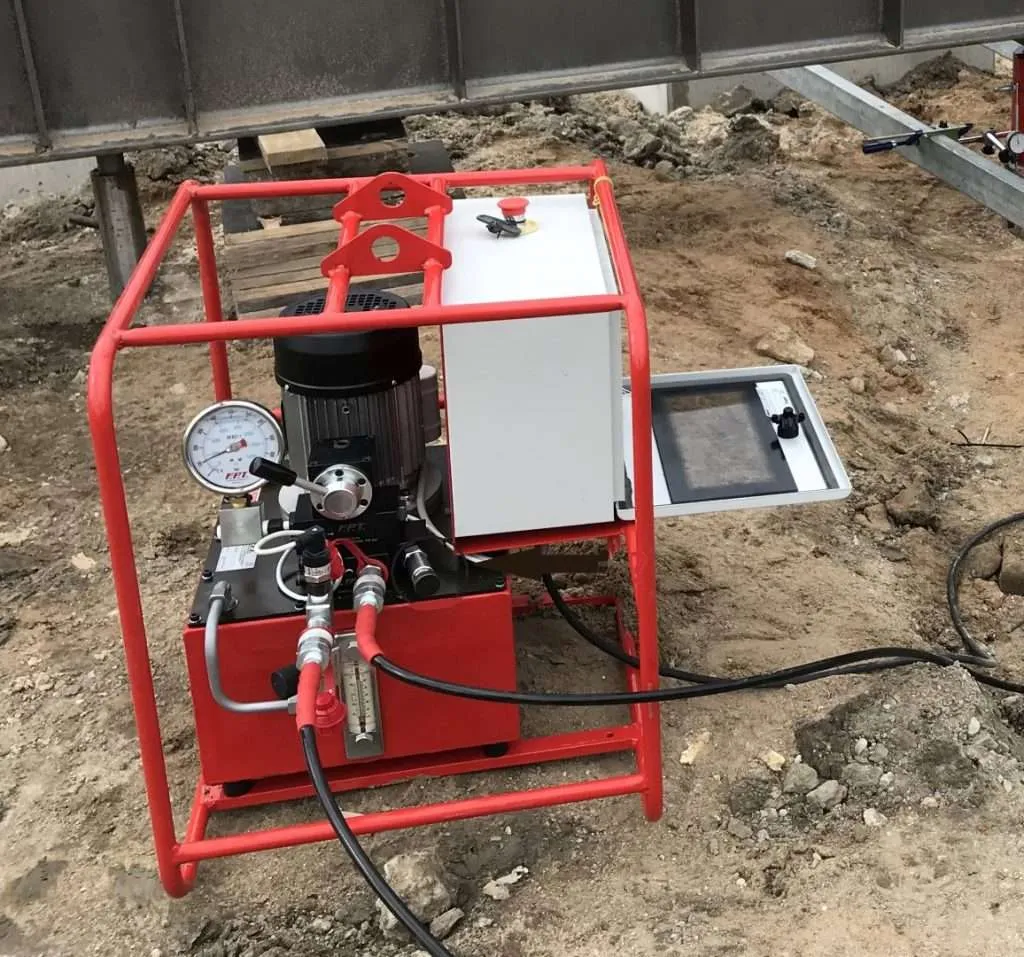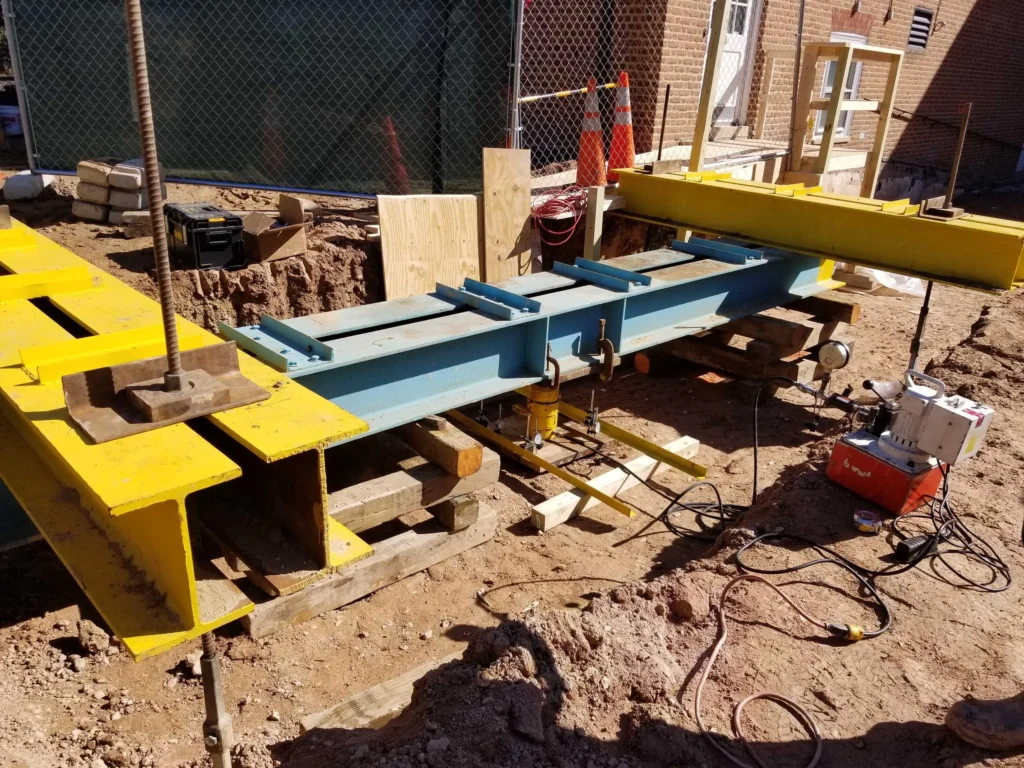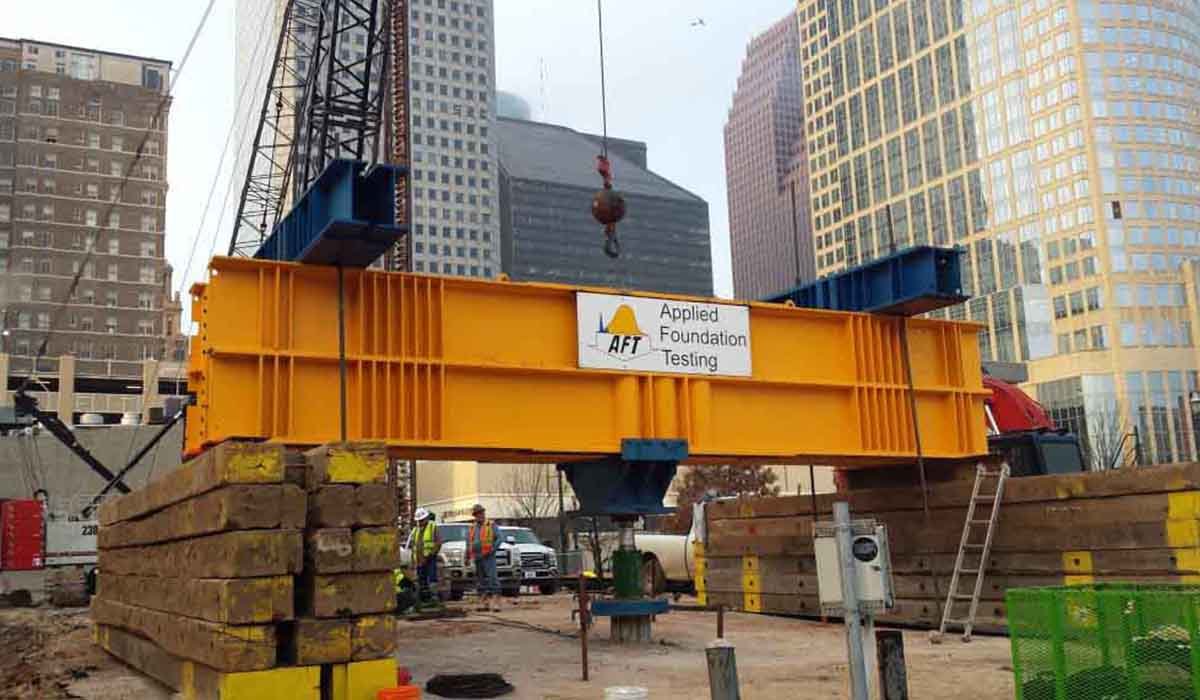What is a static pile load test, and why is it performed in construction projects?
Table of Contents
ToggleA static pile load test is one of the most reliable field methods used to evaluate the performance of deep foundations, particularly piles.
It involves applying a controlled load to a test pile and measuring its settlement response. The primary purpose of this test is to verify the pile’s ultimate load-bearing capacity and ensure that it meets the design requirements of the structure.
Since piles transfer loads from buildings, bridges, or other heavy structures into the soil, an accurate assessment of their capacity is critical to prevent settlement or structural failure. Static pile load tests are typically performed in major construction projects such as high-rise buildings, industrial facilities, bridges, and marine structures, where safety and durability are paramount.
How does a static pile load test determine the load-bearing capacity of a pile?
The static pile load test works on a simple principle: gradually applying a vertical load on the test pile and monitoring how much the pile settles. The load is applied in increments and maintained for specific durations, while precise instruments record displacement and settlement.
By analyzing the load-settlement curve, engineers can determine both the ultimate load capacity and the safe working load of the pile. If the pile shows excessive settlement at a certain load, it indicates that the pile has reached or exceeded its bearing capacity. This information allows engineers to confirm the adequacy of the foundation design or make adjustments if necessary.
Forever Engineering LTD uses precise measurement techniques to ensure dependable results.

What are the advantages of performing a static pile load test on construction sites?
Performing a static pile load test offers several key benefits for construction projects:
- Accuracy and reliability – It provides the most direct and dependable method of verifying pile capacity.
- Quality assurance – Confirms that the pile design and installation methods are suitable for actual site conditions.
- Risk reduction – Minimizes the possibility of foundation settlement or failure after construction.
- Design optimization – Test results may allow engineers to reduce pile length or number, saving time and costs.
- Compliance – Many international and local building codes require static pile load testing before foundation approval.
Overall, the test helps construction companies ensure safety, stability, and cost-effectiveness in their projects.
What are the main procedures followed during a static pile load test?
The static pile load test follows a systematic procedure to ensure accuracy:
- Preparation – A test pile is selected or installed at the site, usually similar in size and type to the working piles.
- Reaction system setup – Heavy kentledge blocks, reaction piles, or anchors are arranged to resist the applied load.
- Instrumentation – Dial gauges, displacement sensors, or electronic devices are fixed to measure settlement precisely.
- Loading sequence – The load is applied gradually in increments, with each stage maintained for a set time (often 30 minutes to 1 hour).
- Observation – At every load stage, settlement is recorded until the maximum test load is reached.
- Unloading phase – The load is released step by step to measure pile rebound, which helps confirm elastic recovery.
- Data analysis – Load-settlement graphs are prepared to determine the ultimate and safe load capacity.
This step-by-step process ensures that the results are dependable and meet engineering standards.

What equipment is commonly used for conducting a static pile load test?
Several types of specialized equipment are used to perform a static pile load test effectively:
- Hydraulic jacks – Apply vertical loads onto the test pile.
- Reaction system – Can include kentledge (concrete blocks), reaction beams, or tension piles to resist the jack load.
- Load measuring devices – Load cells, pressure gauges, or proving rings—record the applied load.
- Settlement measuring instruments – Dial gauges, linear variable differential transformers (LVDTs), or displacement sensors—capture even minute settlement values.
- Support frame – A stable reference frame is set up away from the loading system to hold the measurement devices.
Each piece of equipment plays a vital role in ensuring that the test is performed accurately and safely. Forever Engineering LTD uses advanced testing equipment to deliver precise and trustworthy test results.
How long does a typical static pile load test take to complete?
The duration of a static pile load test depends on the test method, soil condition, and project requirements. Generally, a routine static load test may take one to two days, including preparation, setup, and actual testing. For more detailed testing that requires prolonged load holding at each stage, the process can extend up to three to seven days.
Additionally, time is needed for analyzing results and preparing reports. While the test is time-consuming compared to dynamic methods, its accuracy and dependability make it the preferred choice for critical construction projects.
Forever Engineering LTD ensures efficient scheduling while maintaining accuracy and compliance with standards.
What types of piles can be tested using a static pile load test method?
The static pile load test (SPLT) can be applied to almost all types of piles commonly used in foundation engineering. These include:
- Precast concrete piles – Widely used in building and infrastructure projects, precast piles are frequently tested to verify load capacity.
- Cast-in-situ piles – Bored or drilled shafts can undergo static load testing to confirm their performance under design loads.
- Steel piles – H-section and tubular steel piles are often tested, especially in marine and bridge construction.
- Timber piles – Though less common in modern projects, timber piles can also be evaluated with static load testing.
- Composite piles – A combination of concrete and steel piles can be tested to assess their structural efficiency.
In essence, the static pile load test is versatile and can be applied to compression piles, tension piles, and lateral load piles, making it one of the most comprehensive testing methods in geotechnical engineering.
What is the difference between a static pile load test and a dynamic pile load test?
Both static and dynamic load tests are used to evaluate pile capacity, but they differ in method, accuracy, and application:
- Static pile load test (SPLT) – Involves applying a gradually increasing load to a pile and directly measuring its settlement. It provides highly accurate and reliable results but requires significant time, cost, and heavy equipment.
- Dynamic pile load test (DPLT) – Uses a hammer blow or mechanical impact to apply loads quickly, and results are analyzed using wave equation analysis. It is faster and more economical, but the results are indirect and often less precise compared to SPLT.
In short, static testing is the gold standard for determining actual load capacity, while dynamic testing is mainly used for quick assessments or quality control.

How is the test load applied to the pile during a static pile load test?
The application of load in a static pile load test is carefully controlled to ensure accuracy:
- Reaction system setup – Heavy kentledge blocks, reaction piles, or anchors are arranged to resist the applied force.
- Hydraulic jack placement – A hydraulic jack is installed between the test pile head and the reaction system.
- Incremental loading – The load is applied in increments (usually 25%, 50%, 75%, 100%, and up to 150–200% of the design load).
- Load holding – Each load increment is held for a set period, allowing settlement to stabilize before increasing the load further.
- Settlement measurement – Sensitive instruments, such as dial gauges or LVDTs, record the pile’s vertical movement at each stage.
- Unloading phase – After reaching the maximum test load, the pile is gradually unloaded to measure elastic rebound.
This precise loading sequence ensures that the load-settlement curve is accurate, allowing engineers to determine the pile’s ultimate bearing capacity.
What safety measures should be taken while performing a static pile load test?
Since the test involves heavy loads and hydraulic systems, strict safety measures must be followed:
- Stability of reaction system – Kentledge blocks or reaction piles must be securely anchored to prevent accidents.
- Hydraulic jack inspection – Jacks, hoses, and gauges should be checked for leaks or malfunctions before testing.
- Safe working area – Only authorized personnel should remain near the testing setup, and safety barriers must be installed.
- Load application control – The load must be applied gradually to avoid sudden failure or instability.
- Instrument calibration – All measuring devices must be properly calibrated to ensure accurate readings.
- Emergency preparedness – Safety protocols must be in place in case of system failure or sudden settlement.
By following these precautions, construction teams can minimize risks and ensure a safe testing environment. Forever Engineering LTD prioritizes safety by following strict guidelines during every test.
How do soil conditions affect the results of a static pile load test?
Soil conditions play a critical role in determining the outcome of a static pile load test. Key influences include:
- Soil type – Cohesive soils like clay exhibit slower settlement and require longer load-holding times, while sandy soils respond more quickly.
- Groundwater level – High water tables can reduce effective stress, lowering pile capacity and influencing settlement behavior.
- Soil layering – The presence of weak layers beneath strong upper layers can cause unexpected settlement during testing.
- Soil density and stiffness – Denser soils provide higher bearing capacity, while loose soils result in greater settlements under load.
- Consolidation effects – In clayey soils, long-term settlement may continue after the test, affecting performance predictions.
Understanding these soil-pile interactions is crucial for interpreting test results accurately and ensuring foundation reliability.
Conclusion
At Forever Engineering LTD, we recognize that a static pile load test is one of the most reliable methods for ensuring foundation strength and stability in construction projects. By applying controlled loads and analyzing settlement behavior, this test provides accurate insights into the true load-bearing capacity of piles. Our expertise in conducting static pile load tests guarantees that every project meets safety standards, minimizes structural risks, and achieves long-term durability. With a commitment to quality and precision, Forever Engineering LTD delivers trusted foundation solutions that stand the test of time for decades.

